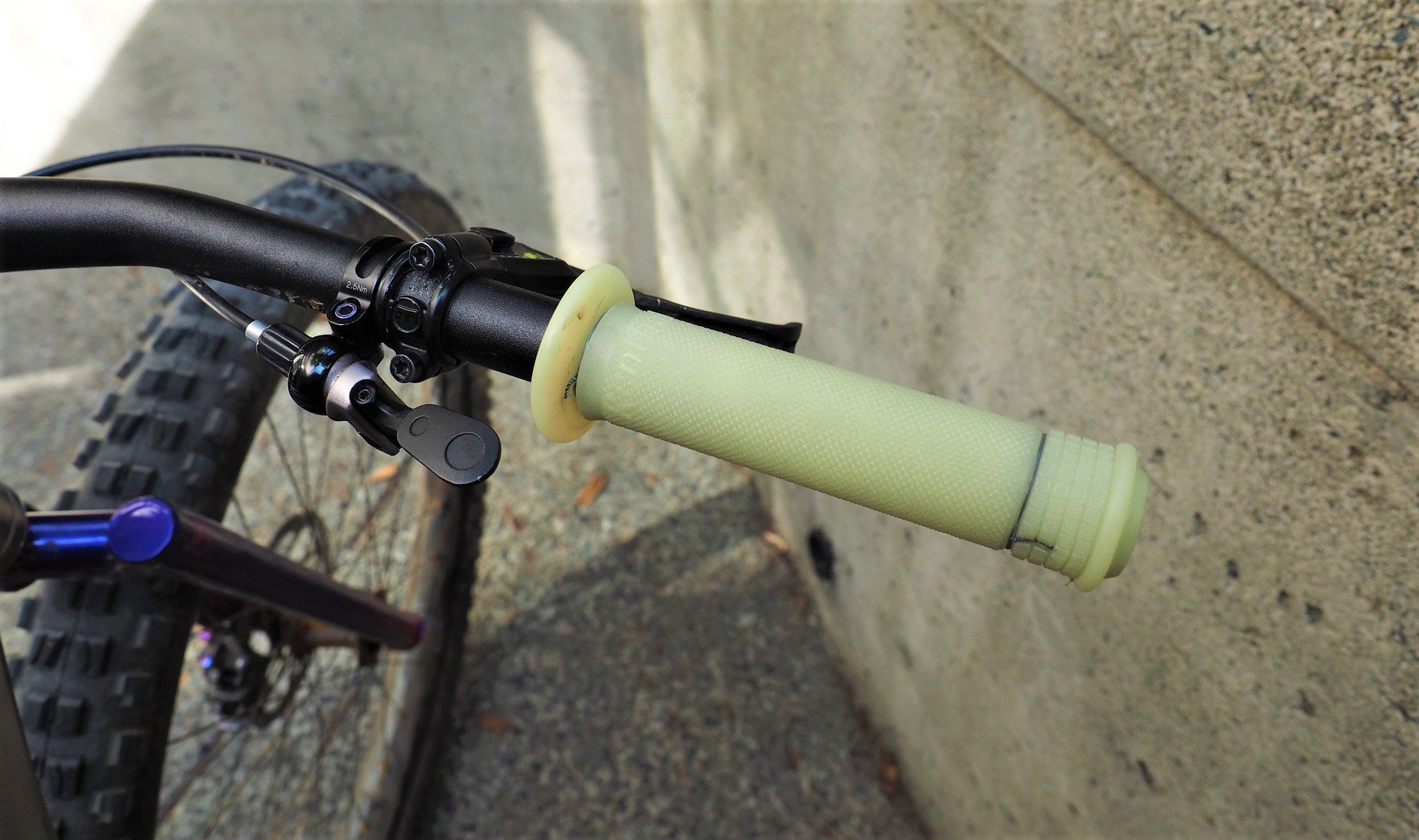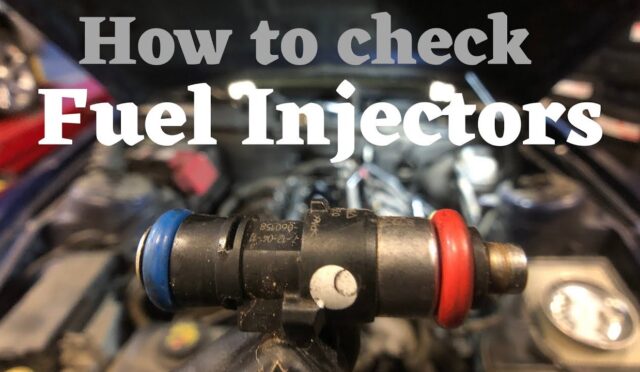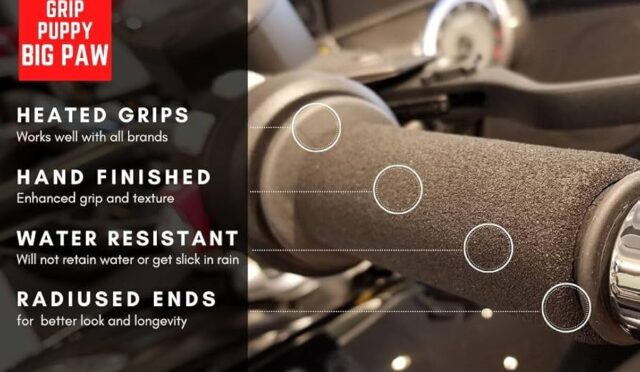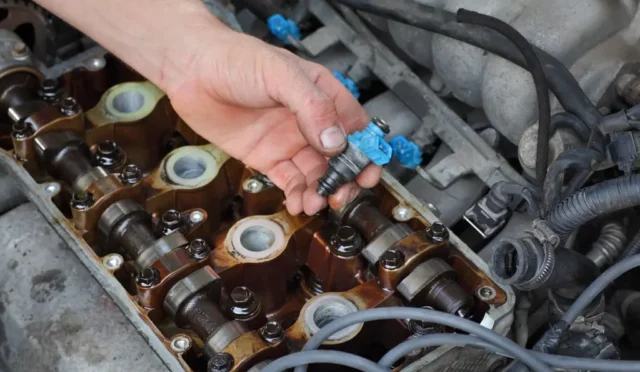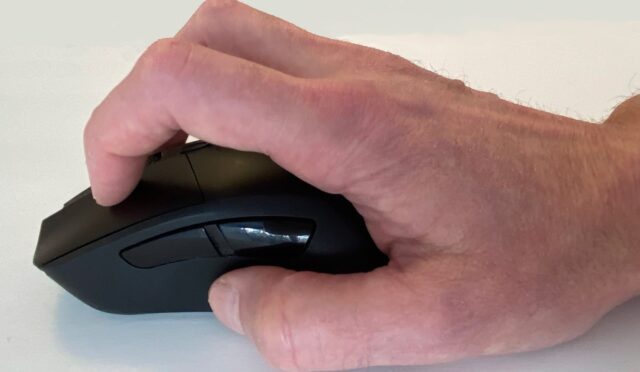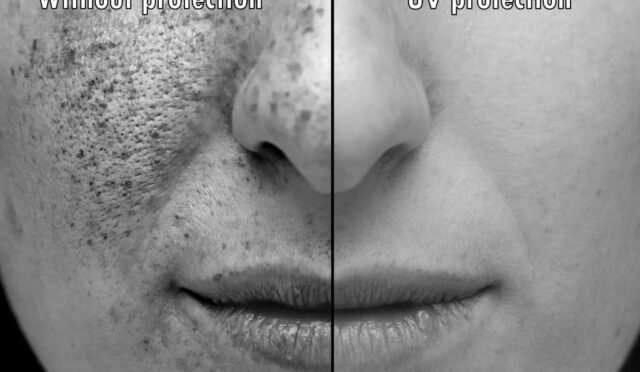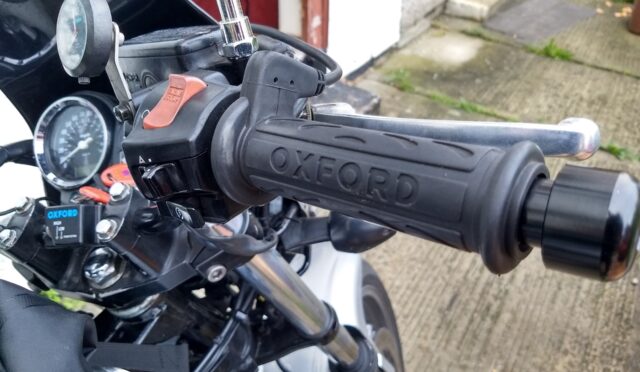Bike grips are essential components of any motorcycle or vehicle. They provide comfort and control while riding. Knowing how long bike grips should last is important for maintaining your ride’s performance.
Typically, bike grips can last anywhere from 1 to 5 years. The lifespan depends on several factors. These include the material of the grips, the amount of use, and the riding conditions. High-quality grips made from rubber or foam may last longer than cheaper alternatives. Regular maintenance can also extend their life.
Most riders notice signs of wear after about a year of use. Common issues include cracking, fading, or loss of grip. If you find your grips are worn down, it’s time for a replacement. Grips that are in good condition should feel comfortable and provide a solid hold.
When it comes to price, bike grips vary widely. Basic models can cost as little as $10. More advanced grips, designed for better ergonomics or durability, may range from $20 to $50. Premium options can even exceed $100, especially those from well-known brands.
To ensure your grips last as long as possible, consider how often you ride. If you ride daily, expect to replace grips more frequently. Riders who use their bikes less often may find their grips last longer.
In summary, bike grips typically last between 1 to 5 years. Their lifespan depends on material, usage, and maintenance. Prices range from $10 to over $100. Regularly check your grips for wear and replace them when necessary to maintain comfort and control while riding.
What Factors Influence The Longevity Of Motorcycle Grips?
When it comes to motorcycle grips, longevity matters. Several factors influence how long your grips will last. Understanding these factors can help you choose the right grips and care for them effectively.
One key factor is the material used. Grips are typically made from rubber, foam, or gel. Rubber grips are durable and offer good traction. However, they can wear out quickly in harsh conditions. Foam grips provide a softer feel but may not last as long. Gel grips combine comfort with durability, but they can be more expensive.
Another important factor is usage. How often you ride and the type of riding you do can affect grip life. Regular riders may notice wear sooner than those who ride occasionally. Off-road riding can accelerate wear due to rough terrain and exposure to dirt.
Environmental conditions also play a role. Sun exposure can cause grips to fade and crack. Extreme temperatures can make materials brittle. Therefore, storing your motorcycle in a shaded area can help extend grip life.
Maintenance is essential for longevity. Cleaning grips regularly can prevent dirt buildup. Using appropriate cleaning products can help preserve the material. Additionally, applying protectants can create a barrier against the elements.
Here’s a quick overview of the factors influencing grip longevity:
| Factor | Impact |
|---|---|
| Material | Durability varies; rubber, foam, and gel have different lifespans. |
| Usage | Frequent use leads to quicker wear. |
| Environmental Conditions | Sunlight and extreme temperatures can damage grips. |
| Maintenance | Regular cleaning and protectant use can prolong lifespan. |
In conclusion, motorcycle grips should last anywhere from a few months to several years. It highly depends on the factors mentioned. Understanding these can help you make informed decisions about your grips and their care.
Signs That Indicate It’s Time To Replace Your Bike Grips
Bike grips are essential for comfort and control while riding. Over time, they wear out. Knowing when to replace them can enhance your riding experience. Here are some signs that indicate it’s time to change your bike grips.
1. Excessive Wear and Tear
Check your grips for signs of wear. Look for cracks, tears, or smooth areas. If the texture is gone, it’s time for a change.
2. Slippery Surface
If your grips feel slippery, especially when your hands are sweaty, it’s a sign they need replacing. Good grips provide traction, ensuring a secure hold.
3. Discomfort While Riding
Feeling discomfort or pain in your hands during or after rides can indicate worn grips. Replacing them can improve comfort, allowing for longer rides.
4. Color Fading
Faded grips can be a cosmetic issue, but they can also lose functionality. If the color is significantly off, consider replacing them.
5. Change in Feel
If your grips feel hard or stiff, they may have lost their cushioning. New grips can restore the comfort level.
6. Age of Grips
On average, bike grips should last around 1 to 3 years, depending on usage and material. If they are older than this, consider replacing them.
Here’s a table summarizing the lifespan of bike grips based on various factors:
| Material | Average Lifespan | Usage Type |
|---|---|---|
| Rubber | 1-2 years | Casual riding |
| EVA Foam | 1-3 years | Mountain biking |
| Silicone | 2-4 years | Commuting |
| Leather | 3-5 years | Luxury bikes |
Regularly inspecting your bike grips can lead to a better riding experience. If you notice any of these signs, consider investing in new grips. They are usually affordable, typically ranging from $10 to $40, depending on the brand and material.
Replacing your bike grips can enhance your comfort and control while riding. Stay alert to these signs to ensure a safe and enjoyable ride.
How To Extend The Lifespan Of Your Motorcycle Hand Grips
Motorcycle hand grips are essential for safety and comfort. They allow riders to maintain control over their bikes. Over time, these grips can wear down. It is crucial to know how to extend their lifespan.
On average, motorcycle grips can last between 2 to 5 years. Factors such as the material, usage, and maintenance affect their durability. Common materials include rubber, foam, and silicone. Each type has its benefits and lifespan.
| Grip Material | Average Lifespan | Features |
|---|---|---|
| Rubber | 2-5 years | Good grip, weather-resistant |
| Foam | 1-3 years | Lightweight, soft feel |
| Silicone | 3-5 years | Durable, resistant to fading |
To extend the lifespan of your motorcycle hand grips, follow these tips:
- Clean regularly. Use a damp cloth to remove dirt and grime.
- Avoid prolonged exposure to sunlight. UV rays can cause material degradation.
- Store your bike in a garage or covered area. This protects grips from extreme weather.
- Use grip protectors during long rides. These shields help against wear and tear.
- Inspect grips routinely for cracks or signs of wear. Early detection can prevent further damage.
Regular maintenance can significantly increase the longevity of grips. Riders can also consider replacing grips with high-quality options. Investing in better materials can lead to fewer replacements over time.
Understanding how long your bike grips should last and how to care for them is essential. By following these tips, you can ensure a smoother and safer riding experience for years to come.
The lifespan of bike grips can vary widely based on factors like material, usage, and maintenance, but generally, they can last anywhere from several months to several years.
Several elements, including the quality of the grip material, frequency of use, exposure to harsh weather, and how well they are maintained, can significantly influence how long they last.
Signs that grips need replacing include excessive wear, cracking, reduced traction, or if they feel slippery, which can compromise your control while riding.
Yes, regular cleaning, avoiding exposure to extreme conditions, and using protective sprays can help prolong the life of your grips.
Yes, grips made from high-quality rubber or synthetic materials tend to offer better durability and resistance to wear compared to cheaper alternatives.
Simple maintenance includes cleaning them with mild soap and water, avoiding aggressive chemicals, and regularly checking for signs of wear or damage.
Yes, many manufacturers offer grips specifically designed for durability, often featuring advanced materials and construction that increase their lifespan.
A more aggressive riding style or frequent off-road use can wear down grips faster than casual, leisurely riding, as more stress is placed on the grips during such activities.
Investing in higher-quality grips can be beneficial as they generally provide better comfort, control, and durability, often making them a worthwhile investment over time.
Low-quality grips may feel uncomfortable, wear out quickly, lack proper traction, or show visible signs of damage soon after purchase, indicating they may not be suitable for long-term use.

